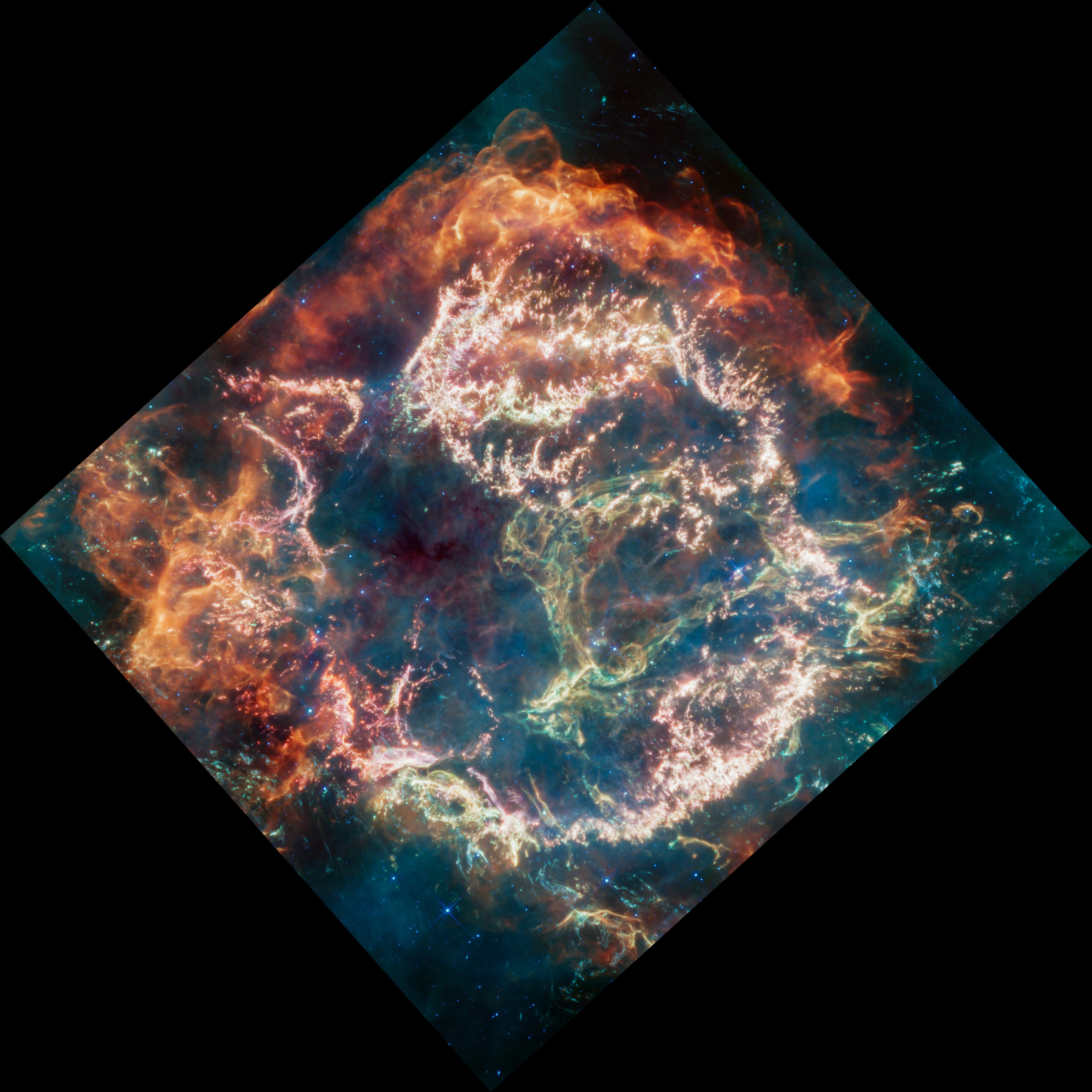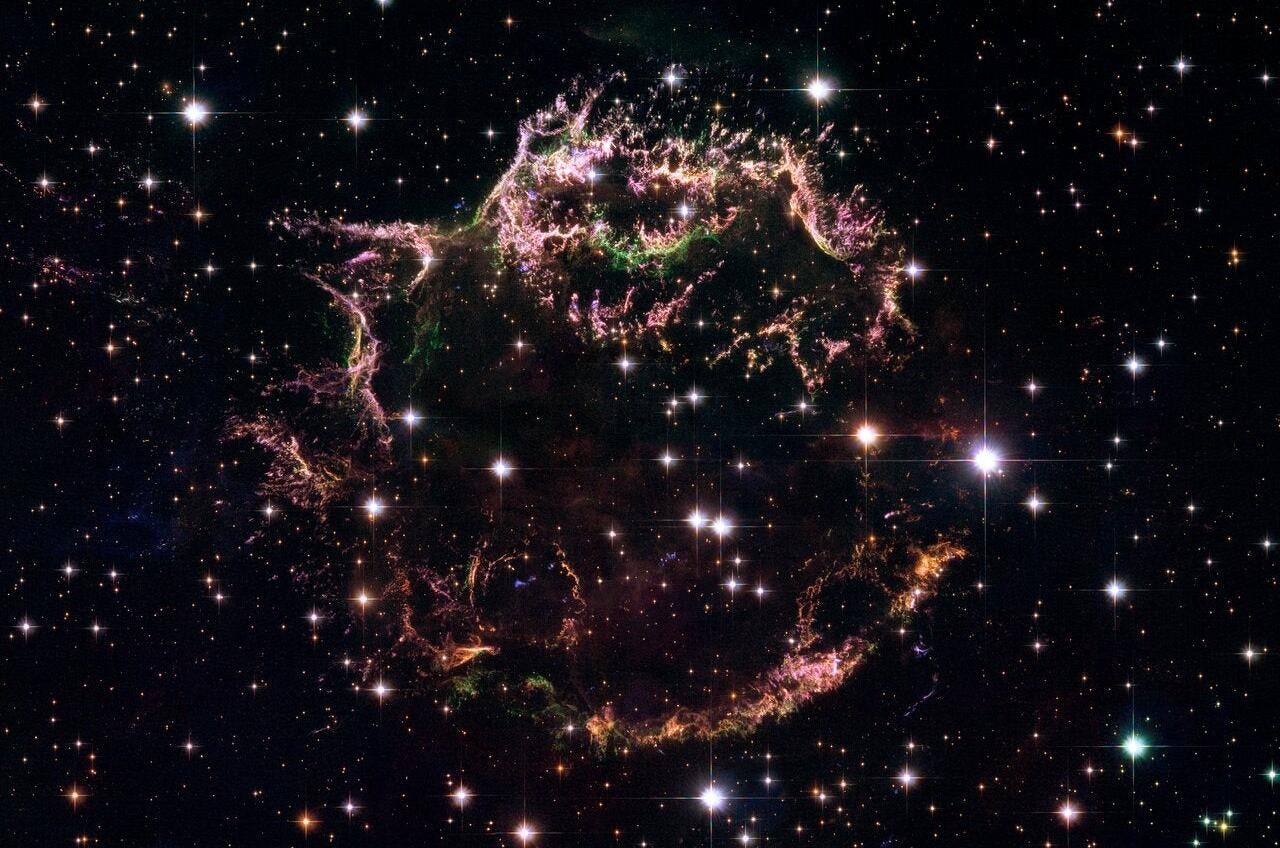About 340 years ago, a brilliant light appeared in Earth’s night sky — a distant star had died in an enormous explosion. That light, which we now know is from the supernova Cassiopeia A, has just been captured in never-before-seen detail by the Webb Space Telescope.
When compared with images of the nova taken by the Hubble Space Telescope in 2004, it’s clear how much more detail Webb can capture — and how significantly the spectral range of an observatory influences the way we see space. Webb sees the cosmos in infrared, while the much older Hubble sees in ultraviolet.
Objects in space emit light at various wavelengths, only some of which are visible to human eyes. Image processors have to decide what colours to assign to wavelengths that are beyond visible light. Those decisions often depend on what information an image is trying to convey: hot areas of star formation or vast swaths of cool dust, for example.
Webb launched in December 2021 and has been producing scientific images of the cosmos since July 2022. It has imaged some of the most ancient light we can see and reproduced iconic views of the universe in new detail. The Cassiopeia A image falls into the latter category, being a very young, famous object.


Cassiopeia A may have been documented as early as 1680 by astronomer John Flamsteed, but its discovery was made official in 1947 by radio astronomers in Cambridge. It is the strongest radio source in the sky beyond our solar system, and as such is a favourite observational target of radio observatories.
In the Webb image, translated from infrared to visible wavelengths, the outer rim of the 10-light-year-wide remnant is deep orange, signifying the presence of warm dust produced when stellar material came in contact with material around the star.
Toward the centre of the image are heavy elements from the deceased star, including oxygen, argon, and neon, as well as some dust. What’s more, the nearly 20 years between the Hubble and Webb images show the expansion of the nebula in the aftermath of the stellar explosion.
A tendril of ectoplasmic green material near the centre of the image is a surprising discovery from Webb. “Its shape and complexity are unexpected and challenging for scientists to understand,” according to a European Space Agency release. Hubble’s image appears less busy, because it doesn’t see as much of the aftermath as Webb.
According to Britannica, at the heart of Cassiopeia A is a neutron star with a carbon atmosphere. Neutron stars are the superdense remnants left behind after a massive star goes supernova; they have such intense gravitational fields that the electrons in their atoms have collapsed onto their nuclei, fusing with protons and creating a massive, extraordinarily dense ball of neutrons.
Like all stars, our Sun will eventually die (in about 5 billion years, to save you the Google search). It is not large enough to produce a supernova or leave a neutron star or a black hole in its wake. However, as it runs out of fuel, the Sun will swell into a red giant, gobbling up Mercury and Venus, and thereafter will become a white dwarf — a depleted star. When it is a dwarf, its ejected material may become a dazzling nebula. Humankind won’t be around to see all that, but at least we can enjoy Cassiopeia A in sharp relief.
More: Webb Telescope Captures Stunning Protostar ‘Hourglass’ in Space
